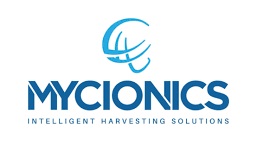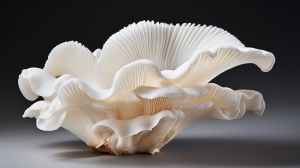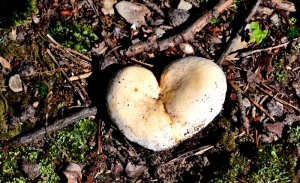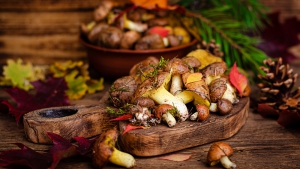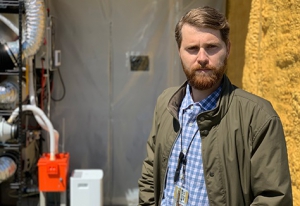The humble mushroom is quietly taking center stage in a global shift toward sustainable living, healthy eating, and circular innovation. Once considered a niche ingredient or a simple forest delicacy, fungi are now at the heart of scientific breakthroughs, environmental solutions, and a booming wellness economy.
From food to function: mushrooms go mainstream
In kitchens and cultivation facilities across the world, mushrooms have become more than a culinary delight, they’re a cornerstone of functional nutrition. The demand for lion’s mane, cordyceps, and reishi continues to grow as consumers seek natural ways to support focus, energy, and immunity. Analysts estimate the global functional mushroom market could surpass $20 billion within the decade, driven by both consumer wellness trends and research into compounds like beta-glucans and hericenones.
For mushroom growers, this trend opens new opportunities beyond traditional button or oyster cultivation. Specialty fungi command higher margins, require less land and water, and appeal to a rapidly diversifying customer base—from wellness brands to supplement formulators.
Mycelium: the root of innovation
Outside the kitchen, mycelium, the root-like network that forms the body of a fungus, is emerging as one of the most exciting biomaterials on Earth. Startups and researchers are developing mycelium-based packaging, textiles, and construction materials that rival plastics, leather, and even concrete. Unlike synthetic materials, mycelium grows naturally from agricultural waste and fully biodegrades, offering a true circular alternative.
Recent progress in Europe and North America shows mycelium composites being adopted for protective packaging, furniture, and even soundproofing panels. For the mushroom industry, these ventures create new synergies: growers can repurpose waste substrates into valuable bioproducts, closing the sustainability loop.
The Future: mushrooms as climate partners
As agriculture faces increasing pressure from climate change, fungi could play a vital role in regenerating soil health and reducing carbon emissions. Mycorrhizal fungi, those that form symbiotic relationships with plant roots—enhance soil structure, boost nutrient uptake, and lock away carbon underground. Forward-thinking farmers are exploring mushroom-integrated systems where fungi coexist with crops to improve yields and biodiversity.
Meanwhile, food innovators are experimenting with mycoprotein-based meat alternatives that deliver both nutrition and sustainability, requiring a fraction of the water and land of traditional livestock.
The bottom line
From the lab to the forest, and from the farm to the factory, fungi are rewriting what’s possible in food, health, and materials science. For mushroom farmers and industry professionals, the message is clear: we are not just growing mushrooms, we are cultivating the future.
Published by Mushroom Matter: connecting the global mushroom community through insight, innovation, and inspiration
A lot of studies and reports are writing about the beneficial facts of mushrooms and we like to see the increasing attention on our beloved mushroom. A lot of innovations are seen where companies are using fungi to achieve a sustainable future, for example in the clothing, construction, furniture and health industry. The recent Pandemic has even accelerated the importance of healthy food and a future without plastic. This article writes about the future of mushrooms and the impact on immunity for people and the planet.
This report reveals the top 5 ways mushrooms will play a role in protecting our immunity in 2026:
- Human and immunity: from the ancient use of mushrooms as medicines to immune-boosting everyday mushrooms converting light into vitamin D, an essential factor in our immune health.
- Food for immunity: how we will be ingesting mushroom’s vital nutrients, from supplements and burgers to drinks. Low in calories, high in nutritional value and considered to be brain boosters.
- Vitamin D: how vitamin D enhances our adaptive immunity and function, and a three-year study currently underway to explore the health benefits of Vitamin D in mushrooms.
- Planetary partners: vertically farmed in forgotten urban spaces, to plastic munching, how mushrooms are leading the smart farming revolution, secretly saving the health of our planet.
- Furniture to Martian mycelium: how mushrooms are being used to make furniture, coffins and to create habitats on lunar missions; mycelium - the compostable material that knows no bounds.
Please read the full article here.
Source: Weekly News
So Much Fungi
It shouldn’t be a surprise that humble mushrooms, fungi that feed on decaying matter, are such a popular ingredient throughout many of the world’s cuisines. After all, mold and yeast, two basic fungi, are responsible for turning milk into blue cheese, wheat into bread and, of course, grape juice into wine. Mushrooms can have a similar transformative effect on food, lending a deep savory character to all sorts of dishes. This intangible quality is often called “meaty,” but mushrooms have several distinct flavor components that make them a natural partner for wine.
Earthy
Few foods are as earthy as mushrooms, which often taste like the soil in which they grow. If this quality appeals to you, pick a wine that will tease it out, rather than overwhelm it. Red Burgundy from the Côte de Nuits is a great earthy expression of Pinot Noir with mushroom-like undertones.
Peppery
Many mushrooms, especially when raw, have a subtle peppery, throat-tickling quality akin to that of radishes. Tannins can accentuate this sensation in an unpleasant way, so try a rich white wine to smooth it out. As it ages, Rioja Blanco develops nutty, caramelized aromas and an almost creamy texture that match beautifully with mushrooms.
Read the full article here.
Source: Wine Enthusiast, by Nils Bernstein
Imagine being able to sustainably produce a nutritious and delicious food product that is not constrained by specific environmental conditions required to support a predominately plant-based agricultural industry.
Kennesaw State University researcher Christopher Cornelison is exploring the possibilities of improving the food supply chain by leveraging innovative technology to expand the opportunities for mushroom production in Georgia.
“We must be able to develop sustainable methods for producing readily preserved and nutritious foods without regional climactic limitations,” said Cornelison, an assistant professor of microbiology in the College of Science and Mathematics and director of the BioInnovation Laboratory at KSU. “Mushrooms are an ideal crop as they only rely on three environmental factors that can be regulated to optimize growth yield—humidity, temperature and carbon dioxide concentrations.”
Although sales of these spore-bearing fruiting bodies of fungi accounted for more than $3.1 billion in U.S. economic impact according to a 2019 American Mushroom Institute report, they are still underutilized.
Cornelison said more than half of the nation’s mushroom production is associated with a single county in Pennsylvania. The substrate used in this production, primarily mulch, is transported from the Midwest to meet the demand.
That is why Cornelison is now focused on determining the feasibility of growing culinary and commodity mushrooms in Georgia via low-cost and efficient production systems housed in modified shipping containers with embedded environmental control systems.
With a new $25,000 award from the venture development program of the Georgia Research Alliance (GRA), Cornelison’s goal is to study the potential commercialization of growing these mushrooms on media or substrates of regional agricultural wastes such as peanut shells, corn chaff or spent brewing grains.
Please read the full article here






